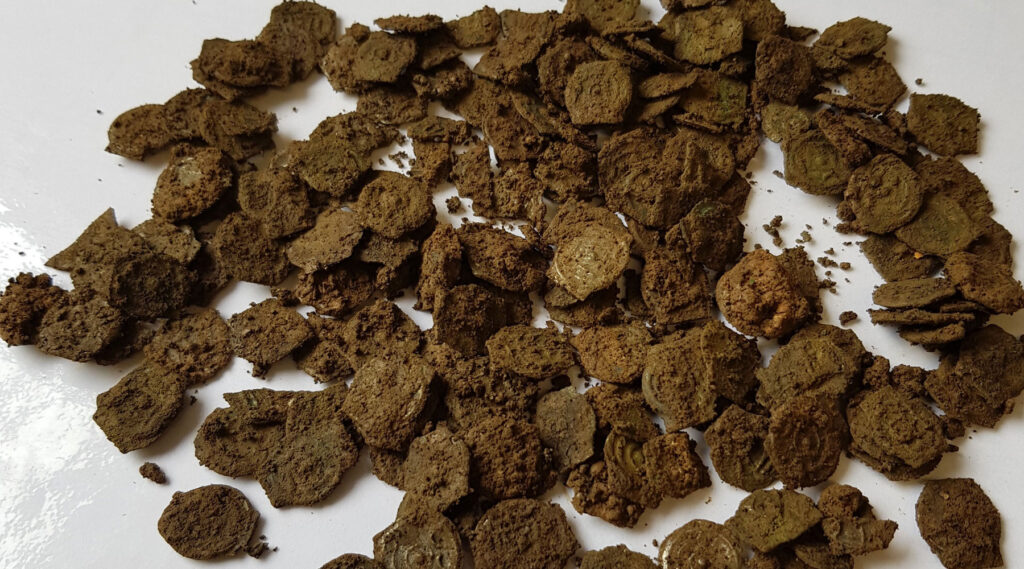A heavy thunderstorm over West London late last August lead to the unexpected discovery of a rare collection of iron-age coins, and one of the largest such finds of its type in the UK.
The site in Hillingdon was undergoing archaeological excavation and analysis led by HS2’s enabling works contractor, Costain Skanska joint venture when the ground conditions changed following a heavy storm, and that revealed where the coins were buried.
Potins from late in the Iron Age, similar to the Hillingdon Hoard, have been found previously but in much smaller quantities, making this find a very significant discovery. The find may be recognized as “treasure” under British Law.
The iron-age coins date back to the late Iron Age, during a period of change as the Romans began to establish themselves in Britain and create Londinium. The potins are based on coins struck in Marseille, France, about 2,175 years ago, which bear the left-facing head of Apollo on one side and a bull charging right on the other. The use of these early coins spread across northern Europe.
In England, their use was commonly linked to Kent, Essex or Hertfordshire. The term ‘potin’ refers to the base metal silver-like alloy used in coins. It is typically a mixture of copper, tin and lead.
Historians are still unclear what the potins were used for during the Iron Age, particularly as the exchange of goods and service, or bartering is thought to have been the main method of commerce at that time, nor why the coins were deposited where they were found.
Archaeologists analysing the discovery believe the potins may have been to mark the boundary of a property or as an offering to the Gods – in a woodland clearing or near a sacred spring. It is not unusual for a hoard to be found in an apparently isolated location and they may also have been buried as saving hoards or as emergency hoards in times of crisis.
The first series of potins produced in Britain, are known as Kentish Primary or Thurrock types, and are likely to have been made no later than 150 BC. Sometime before 100 BC, these rather bulky coins were replaced by thinner coins with more degenerate designs, now called Flat Linear types. Over a period of several decades, the Flat Linear potins gradually evolved into a wide variety of forms, with the depiction of the bull and the head of Apollo becoming more and more stylised.
The Hillingdon Hoard is late in the Flat Linear sequence.
Describing the discovery, Emma Tetlow, now working as Historic Environment Lead for HS2’s main works contractor Skanska Costain joint venture said: “We were coming to the end of our archaeological work on the site when we found a patch of soil that was a very different colour from what it would be expected to be. The patch of soil was dark greeny-blue which suggests oxidized metal, and when we checked more closely, we could see loosely packed metal discs. This is a once in a lifetime find, and allows us to expand our knowledge of what life could have been like in Hillingdon many centuries ago.”
Because of the significance of the find, and the high number of coins, the local coroner was alerted. The coroner will determine whether the discovery amounts to ‘treasure’ after considering specialist evidence from the British Museum. The potins were removed from site for specialist cleaning, conservation and assessment. Records have then been sent to a specialist for cataloguing and further assessment to determine their origins and significance.
The hoard was found during HS2 works on land that was occupied temporarily and HS2 is not making any claim on the hoard.











Perhaps Potins are the origination of the term “ One for the Pot !”
*Hoard
“Hoard” as in the article, not “horde” as in the title.